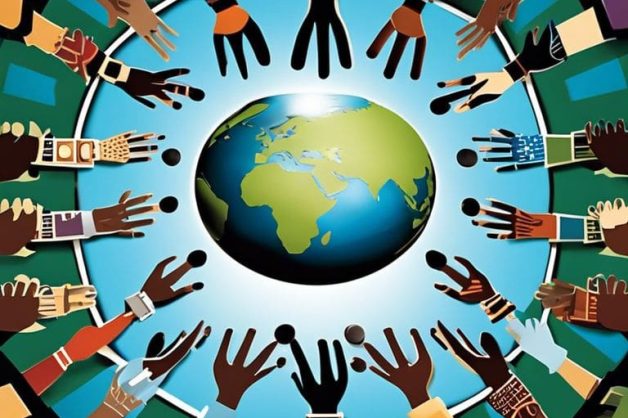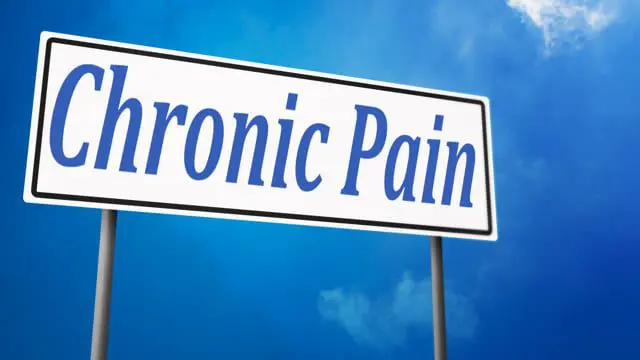Human rights are fundamental to the dignity and freedom of individuals around the world. These rights, enshrined in various international and national legal frameworks, ensure that individuals are treated with respect and fairness. In this article, we explore the intricacies of derechos humanos law, providing insights into legal frameworks, protection measures, and effective advocacy strategies to safeguard these essential rights.
Comprender la legislación sobre derechos humanos
Human rights law encompasses a range of legal standards and principles that protect the fundamental rights and freedoms of individuals. These laws are designed to prevent abuses and ensure that every person is treated with dignity and equality. Human rights are protected at multiple levels, including international, regional, and national.
International Human Rights Framework
En international human rights framework is established through treaties, conventions, and agreements developed by the United Nations and other international bodies. Key documents include the Universal Declaration of Human Rights (UDHR), the International Covenant on Civil and Political Rights (ICCPR), and the International Covenant on Economic, Social, and Cultural Rights (ICESCR).
These instruments outline a broad spectrum of rights, including the right to life, freedom of expression, freedom from torture, and the right to a fair trial. Countries that ratify these treaties are obligated to incorporate these standards into their national laws and ensure their enforcement.
The UN Human Rights Council and other international bodies monitor compliance with these treaties and investigate allegations of human rights violations. They also provide forums for addressing grievances and seeking redress for victims.
Regional Human Rights Systems
Regional human rights systems complement the international framework by addressing specific issues within their geographical areas. Notable regional systems include the European Convention on Human Rights (ECHR), the American Convention on Human Rights (ACHR), and the African Charter on Human and Peoples’ Rights (ACHPR).
These systems have established courts, such as the European Court of Human Rights and the Inter-American Court of Human Rights, which adjudicate cases of human rights violations and issue binding rulings. Regional mechanisms provide additional layers of protection and ensure that human rights standards are tailored to regional contexts.
Human Rights Violations and Legal Protections
Human rights violations occur when states or non-state actors infringe upon the fundamental rights and freedoms of individuals. These violations can take many forms, including torture, arbitrary detention, discrimination, and denial of due process. Legal protections are essential to prevent and address these abuses.
Torture and Inhumane Treatment
Torture and inhumane treatment are among the most egregious human rights violations. International law unequivocally prohibits torture under any circumstances. The Convention Against Torture and Other Cruel, Inhuman or Degrading Treatment or Punishment (CAT) provides the legal framework for preventing and punishing acts of torture.
States parties to the CAT are required to take effective measures to prevent torture, investigate allegations, and prosecute perpetrators. Victims of torture have the right to seek redress and rehabilitation. Legal professionals play a crucial role in advocating for victims, ensuring that their rights are upheld, and holding violators accountable.
Arbitrary Detention and Due Process
Arbitrary detention refers to the arrest and detention of individuals without due process of law. This violation undermines the right to liberty and security of person. International human rights instruments, such as the ICCPR, guarantee the right to a fair trial and protection against arbitrary detention.
Legal protections include the right to be informed of charges, the right to legal representation, and the right to challenge the lawfulness of detention before a court. Advocacy for these rights involves legal professionals working to ensure that detainees receive fair treatment and that judicial processes are transparent and impartial.
Discrimination and Equality
Discrimination based on race, gender, religion, or other characteristics is a pervasive human rights issue. Anti-discrimination laws aim to protect individuals from unfair treatment and promote equality. International treaties, such as the Convention on the Elimination of All Forms of Racial Discrimination (CERD) and the Convention on the Elimination of All Forms of Discrimination Against Women (CEDAW), provide the legal basis for combating discrimination.
National laws and policies must align with these international standards to effectively address discrimination. Legal professionals and advocates work to enforce these laws, raise awareness, and support victims of discrimination in seeking justice.
Effective Advocacy Strategies
Advocacy strategies are essential for promoting and protecting human rights. Legal professionals, non-governmental organizations (NGOs), and human rights activists employ various approaches to advance human rights causes and secure justice for victims.
Legal Advocacy and Litigation
Legal advocacy involves using the legal system to protect and promote human rights. This includes representing victims of human rights violations, challenging unjust laws, and seeking judicial remedies. Strategic litigation can set important legal precedents and drive systemic change.
Human rights lawyers often work with NGOs to bring cases before national and international courts. High-profile cases can raise public awareness, generate media attention, and pressure governments to implement reforms. Successful litigation not only provides justice for individual victims but also strengthens the overall legal framework for human rights protection.
Public Awareness and Education
Raising public awareness about human rights issues is crucial for creating a culture of respect and accountability. Public education campaigns, media outreach, and community engagement initiatives help inform people about their rights and how to defend them.
Educational programs can be implemented in schools, universities, and community centers to teach the principles of human rights and the importance of legal protections. By empowering individuals with knowledge, these programs encourage active participation in human rights advocacy and foster a more just society.
Policy Advocacy and Reform
Policy advocacy focuses on influencing laws, policies, and practices to better protect human rights. Advocates work with policymakers, government officials, and legislators to draft and enact laws that uphold human rights standards.
Policy reform efforts may address issues such as justicia penal, immigration, labor rights, and healthcare. By advocating for comprehensive and inclusive policies, human rights defenders aim to create systemic change that benefits marginalized and vulnerable populations.
Challenges and Opportunities in Human Rights Protection
Protecting human rights presents various challenges, including political resistance, lack of resources, and cultural barriers. However, there are also significant opportunities to advance human rights through innovation, collaboration, and resilience.
Political Resistance and Repression
In many countries, political resistance and repression hinder human rights protection. Authoritarian regimes may suppress dissent, restrict freedom of expression, and undermine the rule of law. Human rights defenders often face harassment, intimidation, and violence for their work.
To counter these challenges, international solidarity and support are crucial. The global human rights community can provide resources, advocacy, and protection for human rights defenders at risk. Diplomatic pressure and sanctions can also be effective tools for holding repressive governments accountable.
Resource Constraints and Capacity Building
Resource constraints are a significant barrier to effective human rights advocacy. Many NGOs and legal aid organizations operate with limited funding and staffing. Capacity building initiatives can enhance the effectiveness of human rights organizations by providing training, technical assistance, and financial support.
Strengthening partnerships and networks among human rights organizations can also improve resource allocation and collaborative efforts. By sharing knowledge and resources, the human rights community can amplify its impact and achieve greater results.
Cultural Barriers and Community Engagement
Cultural barriers can impede the acceptance and implementation of human rights standards. In some societies, traditional norms and practices may conflict with international human rights principles. Effective advocacy requires culturally sensitive approaches that respect local contexts while promoting universal human rights values.
Engaging with local communities and leaders is essential for building trust and fostering change. Participatory approaches that involve community members in decision-making processes can lead to more sustainable and impactful human rights initiatives.
Innovations in Human Rights Advocacy
Innovations in technology and methodology are transforming human rights advocacy. Digital tools, data analytics, and new communication platforms offer novel ways to monitor, document, and address human rights violations.
Digital Advocacy and Social Media
Digital advocacy leverages technology to mobilize support, raise awareness, and engage with broader audiences. Social media platforms, such as Twitter, Facebook, and Instagram, provide powerful tools for human rights campaigns. They enable activists to share information, coordinate actions, and generate global solidarity.
Online petitions, crowdfunding, and virtual events have also become important components of digital advocacy. These tools allow human rights organizations to reach and engage with supporters worldwide, raising funds and amplifying their messages.
Data Analytics and Human Rights Monitoring
Data analytics is revolutionizing human rights monitoring and reporting. By analyzing large datasets, advocates can identify patterns, trends, and correlations that highlight human rights abuses. Geographic Information Systems (GIS) and remote sensing technologies can map violations and track changes over time.
AI-powered tools can analyze social media, news reports, and other sources to detect emerging human rights issues. These technologies enhance the ability of human rights organizations to respond quickly and effectively to violations.
Global Cooperation and Multilateral Efforts
Global cooperation is essential for addressing complex human rights challenges. Multilateral efforts involving governments, international organizations, and civil society can create comprehensive and coordinated responses to human rights violations.
United Nations and International Mechanisms
The United Nations plays a central role in promoting and protecting human rights globally. UN bodies, such as the Human Rights Council, the Office of the High Commissioner for Human Rights (OHCHR), and various treaty-based committees, provide forums for addressing human rights issues.
International mechanisms, such as the Universal Periodic Review (UPR) and special rapporteurs, monitor and report on human rights conditions in member states. These mechanisms offer opportunities for dialogue, accountability, and improvement.
Regional Cooperation and Human Rights Institutions
Regional cooperation complements international efforts by addressing specific human rights issues within regional contexts. Regional human rights institutions, such as the African Commission on Human and Peoples’ Rights and the Inter-American Commission on Human Rights, provide additional layers of protection and accountability.
These institutions work closely with national governments, civil society, and international organizations to promote human rights and address violations. Regional mechanisms can tailor their approaches to reflect cultural, political, and social dynamics unique to their regions.
Conclusion: The Path Forward for Human Rights Protection
The protection of derechos humanos is a continuous and collective effort that requires dedication, innovation, and resilience. By leveraging legal frameworks, advocacy strategies, and collaborative approaches, the global community can advance human rights and ensure dignity and justice for all individuals.
Human rights defenders, legal professionals, and advocates must remain vigilant and adaptive in the face of evolving challenges. Through education, engagement, and empowerment, they can build a more just and equitable world where human rights are respected and upheld.
As the landscape of human rights continues to evolve, it is essential to foster a culture of respect, accountability, and solidarity. By working together, we can create a future where human rights are universally recognized and protected, ensuring that every person can live with dignity and freedom.
Attorneys.Media Video Document References
- Is Personal Injury Part of Your Law Practice?
- As an Attorney, How Are You Generating Content for Your Online Presence?
- How Can You Help Potential New Clients Get Their Questions Answered?
- How Do You Differentiate Yourself When Someone Looks Online for Help?
- How Do You Differentiate Yourself as a Criminal Defense Attorney?
- Have You Been Thinking About Video Marketing for Your Law Firm?
- Should Attorneys Use Video Marketing to Attract New Clients?
- What Do Potential Clients See When They Research Your Name Online?
- Cómo puede ayudarle Attorneys.Media








